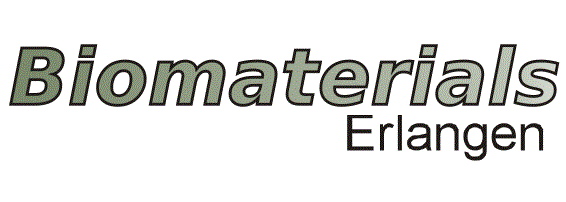Annika Mauch
Annika Mauch
Masterstudentin
Extrusion-based Bioprinting of Alginate based Bioinks Blended with Matrix Proteins for Improved Cell Spreading and Cell Orientation
Betreuer: Jonas Röder, Prof. Aldo R. Boccaccini
Alginate di-aldehyde based bioinks are very promising bioinks in biofabrication due to their biocompatibility and biodegradability.[1] The mechanical properties and the printability can be improved by producing pre-crosslinked hydrogels or by mixing the alginate based bioinks.[2] Addition of gelatin to the alginate bionik improves the cell interaction activity.[3] However, it is challenging to produce a structure where the cells can spread anisotropically like in a connective tissue or organ.[4] This Master thesis aims to achieve hydrogels with anisotropic cell adhesive structures for good cell spreading, orientation and colonialization. Therefore, blends with alginate based bioinks and fragmented biopolymer networks from proteins are produced by extrusion-based bioprinting, controlling the orientation of the added proteins and the microporosity of the hydrogel.
[1] Reakasame, S.; Boccaccini, A. R. Oxidized Alginate-Based Hydrogels for Tissue Engineering Applications: A Review. Biomacromolecules, 2018, 19 (1), 3–21.
[2] Hazur, J.; Röder, J.; Czwalinna, J.; Schubert, D. W.; Boccaccini, A. R. Pre‐Crosslinking with Hydrogel Microparticles Enhances the Printability of Alginate‐Based Inks. Macro Materials Eng, 2023, 2200675.
[3] Łabowska, M. B.; Cierluk, K.; Jankowska, A. M.; Kulbacka, J.; Detyna, J.; Michalak, I. A Review on the Adaption of Alginate-Gelatin Hydrogels for 3D Cultures and Bioprinting. Materials, 2021, 14 (4), 858.
[4] You, F.; Wu, X.; Kelly, M.; Chen, X. Bioprinting and in Vitro Characterization of Alginate Dialdehyde–Gelatin Hydrogel Bio-Ink. Bio-des. Manuf., 2020, 3 (1), 48–59.

